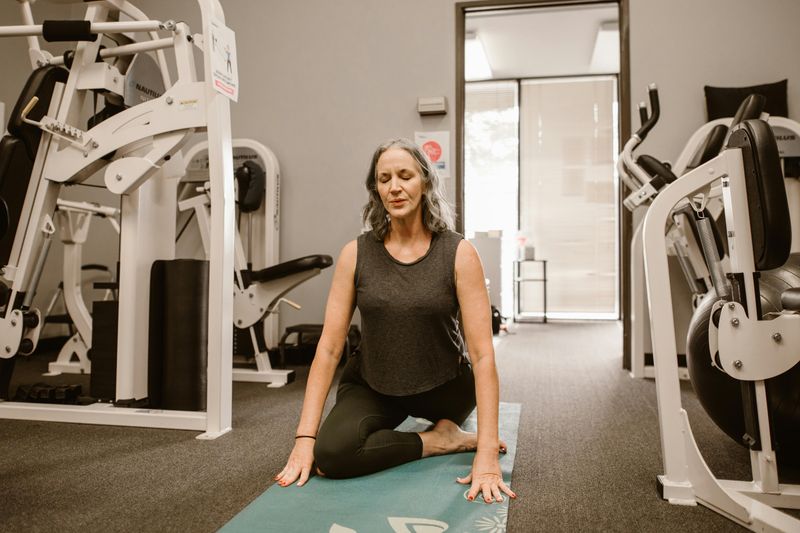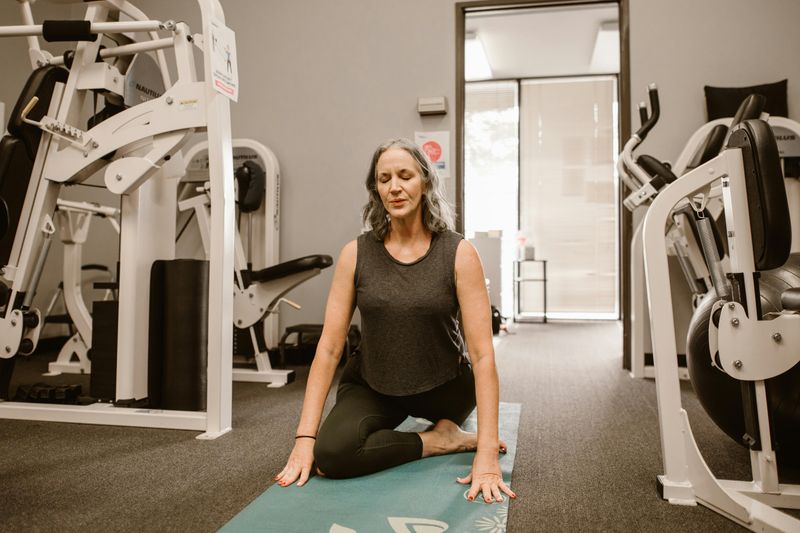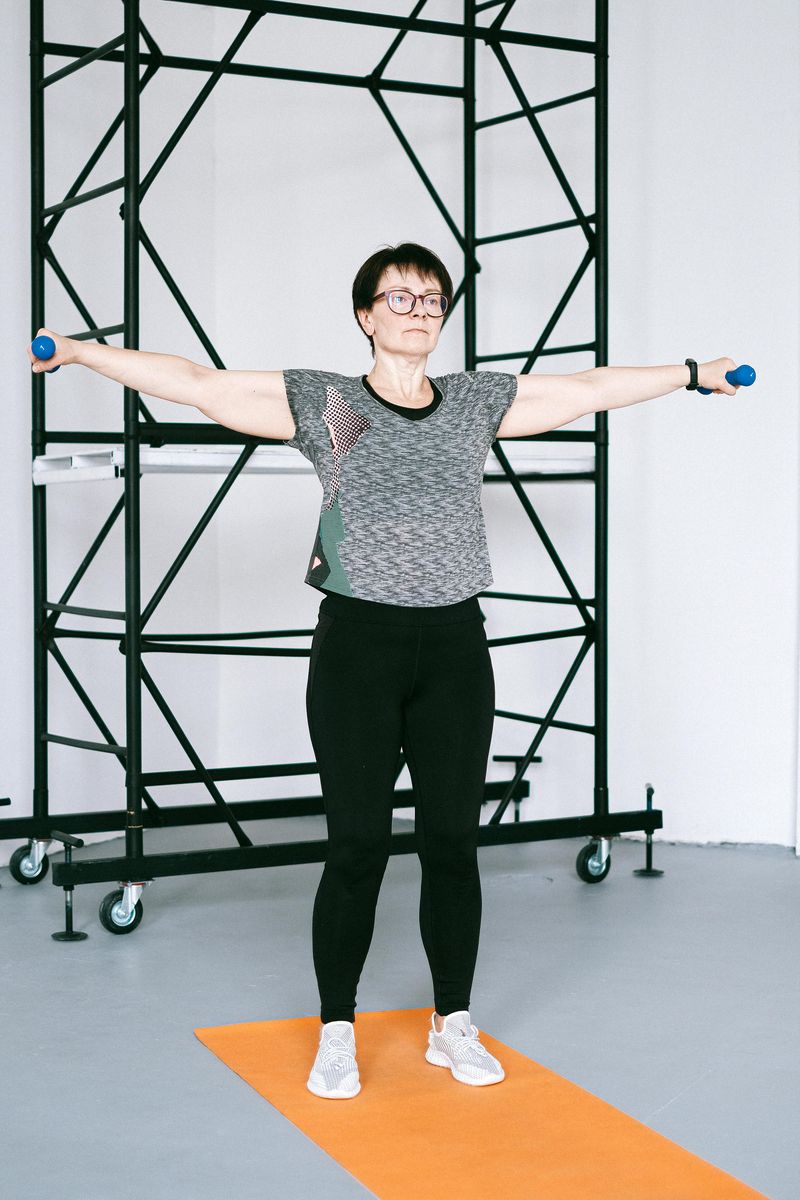12 Health and Fitness Guidelines for Women Over 40

Turning 40 marks a significant shift in how our bodies function and respond to exercise and nutrition. Hormonal changes, slowing metabolism, and natural aging processes create new health challenges that require fresh approaches. With the right strategies, women over 40 can maintain vibrant health, strong bodies, and boundless energy for decades to come.
1. Prioritize Strength Training

Women naturally lose about 3-5% of muscle mass each decade after 30, which dramatically affects metabolism and energy levels. Regular resistance training creates a powerful counterforce to this decline.
Two to three weekly sessions using free weights, machines, or even body weight exercises can preserve precious muscle tissue. Focus on compound movements like squats and rows that work multiple muscle groups simultaneously.
The magic happens when you challenge yourself – use weights heavy enough that the last few reps feel difficult. This stimulates muscle growth and triggers bone-strengthening benefits that become increasingly important during perimenopause and beyond.
2. Embrace Weight-Bearing Cardio

Your heart and bones both benefit when you choose the right type of cardiovascular exercise. Activities where your feet and legs support your weight – like walking, jogging, or dancing – deliver double benefits by strengthening your cardiovascular system and building bone density simultaneously.
Aim for 150 minutes weekly of moderate-intensity movement that makes you breathe harder but still allows conversation. Break this into manageable 30-minute sessions spread throughout your week.
Morning cardio particularly benefits women over 40, jumpstarting metabolism for the day ahead and establishing consistency before daily demands pile up. Even short bursts count – park farther away or take the stairs whenever possible.
3. Make Flexibility Part of Daily Life

Remember how easily you could touch your toes as a child? That natural flexibility diminishes with age unless deliberately maintained. Regular stretching keeps muscles supple, improves posture, and prevents the stiffness that can make everyday movements uncomfortable.
Gentle yoga flows or 10-minute morning stretch routines yield tremendous benefits when practiced consistently. Focus especially on hip, shoulder, and spine mobility – areas where women commonly experience age-related tightness.
Beyond formal stretching, look for opportunities throughout your day to extend your range of motion. Reach for that top shelf instead of grabbing the step stool, or take the long way around your office. Small movements accumulate into meaningful mobility improvements over time.
4. Practice Balance Training Regularly

Balance isn’t just for yogis – it’s a fundamental skill that naturally declines with age unless we actively maintain it. Good balance prevents falls, keeps you steady during everyday activities, and enables continued independence as you age.
Simple exercises like standing on one foot while brushing your teeth or practicing heel-to-toe walking require no equipment and can be incorporated into daily routines. For more challenge, try balance boards, stability balls, or specific yoga poses like tree pose.
Many women notice balance changes during perimenopause due to shifting hormones affecting the inner ear and proprioception. Consistent practice creates new neural pathways that help your brain quickly adjust to unstable surfaces, keeping you steady and confident in all your movements.
5. Boost Your Protein Intake

Protein becomes your best friend after 40, when maintaining muscle mass requires more intentional nutrition. Your body simply doesn’t process protein as efficiently as it once did, making higher intake necessary to achieve the same muscle-preserving effects.
Aim for 25-30 grams per meal, spaced evenly throughout the day rather than loading up at dinner. Quality sources include lean meats, fish, eggs, Greek yogurt, legumes, and plant-based options like tofu.
Beyond muscles, adequate protein supports immune function, helps control appetite, and provides steady energy without blood sugar spikes. Consider keeping easy protein options readily available – hardboiled eggs, Greek yogurt, or protein smoothie ingredients – to make healthy choices effortless even on busy days.
6. Prioritize Bone-Building Nutrients

Your skeleton undergoes significant remodeling after 40, with bone loss potentially accelerating during perimenopause. Calcium and vitamin D work as essential partners in maintaining bone strength, yet many women fall short on both nutrients.
Aim for 1,000-1,200mg of calcium daily from food sources like dairy, fortified plant milks, leafy greens, and canned fish with bones. Vitamin D needs sunlight to activate in your body, but northern climates and sunscreen use often limit natural production.
Blood testing can reveal your vitamin D status, with many women benefiting from supplementation, especially during winter months. Magnesium, vitamin K, and weight-bearing exercise complete the bone-health puzzle by helping calcium properly incorporate into bone tissue rather than depositing in arteries or joints.
7. Rethink Your Hydration Strategy

Water becomes increasingly crucial after 40, when cellular hydration directly impacts everything from skin elasticity to joint comfort. Many women mistake mild dehydration symptoms like fatigue or headaches for other issues, missing this simple fix.
Your thirst mechanism naturally becomes less sensitive with age, making scheduled drinking more reliable than waiting until you feel thirsty. Carry a marked water bottle to track intake, aiming for roughly half your body weight in ounces daily.
Morning hydration jumpstarts your metabolism after overnight fasting. Try warm lemon water first thing to gently wake digestive processes. For exercise sessions, hydrate before, during, and after workouts, as even 2% dehydration can significantly impact performance and recovery, especially during perimenopause when hot flashes may increase fluid needs.
8. Focus on Nutrient Density, Not Restriction

The restrictive diets that might have worked in your 20s and 30s often backfire after 40, when your body interprets severe calorie cutting as stress. Instead, shift focus to maximizing nutrition per calorie – getting more beneficial compounds from every bite you take.
Colorful vegetables and fruits deliver antioxidants that combat age-related cellular damage. Healthy fats from avocados, olive oil, and fatty fish provide essential building blocks for hormone production during perimenopause. Fiber-rich foods support gut health, which increasingly connects to everything from mood to immune function.
Rather than eliminating food groups, crowd out less nutritious options by filling your plate with powerhouse foods first. This positive approach sustains energy, reduces inflammation, and supports metabolism without triggering the stress response that can actually promote weight gain.
9. Prioritize Restorative Sleep

Sleep becomes both more important and more elusive for many women after 40. Hormonal fluctuations during perimenopause can trigger night sweats, while everyday stressors may make falling asleep difficult. Yet quality sleep directly impacts weight management, skin health, and emotional resilience.
Create a consistent sleep schedule, going to bed and waking at similar times even on weekends. This reinforces your body’s natural circadian rhythm. Limit blue light exposure from screens in the evening hours, as it suppresses melatonin production.
Your bedroom environment matters tremendously – keep it cool (around 65°F), completely dark, and free from electronic distractions. Consider tracking your sleep patterns with a journal or app to identify which habits support your best rest, as individual needs vary significantly, especially during hormonal transitions.
10. Develop Personalized Stress Management Techniques

Chronic stress accelerates aging at the cellular level while disrupting hormones that regulate everything from appetite to fat storage. Women over 40 often juggle multiple responsibilities – career demands, aging parents, growing children – creating unprecedented stress levels
Experiment with different relaxation approaches until you find what truly works for your personality and schedule. Some women benefit from meditation or deep breathing, while others find relief through movement like walking or gardening. The effectiveness lies not in which technique you choose, but in practicing it consistently.
Even five minutes of intentional stress management several times daily can significantly reduce cortisol levels. Pay special attention to how your body expresses stress – tension headaches, digestive issues, or disrupted sleep – and use these signals as early warnings to implement your chosen relaxation techniques.
11. Listen to Your Body’s Changing Signals

Your body communicates differently after 40, sending new signals about exercise recovery, food sensitivities, and stress levels. Learning this evolved language allows you to respond appropriately rather than pushing through warnings that previously might have been safe to ignore.
Recovery between workouts often takes longer now – what once required 24 hours might need 48-72 hours, especially after intense sessions. Honor these needs rather than forcing yesterday’s schedule. Similarly, foods that never bothered you before might suddenly trigger inflammation or digestive issues.
Keep a simple journal tracking energy levels, sleep quality, and physical symptoms to identify patterns. This personalized data proves far more valuable than generic advice. The goal isn’t to limit yourself but to discover your body’s new operating manual, allowing you to work with your changing physiology rather than against it.
12. Embrace Consistency Over Perfection

The all-or-nothing approach to health often derails women over 40 who face fluctuating energy levels and competing priorities. Small, consistent actions ultimately yield greater results than occasional perfect days followed by complete abandonment of healthy habits.
Create simple systems that make healthy choices easier – meal prepping on Sundays, scheduling workouts like important meetings, or keeping a water bottle always within reach. When life inevitably disrupts your plans, focus on the minimum effective dose – perhaps a 10-minute walk or adding extra vegetables to a takeout meal.
Remember that consistency creates compound interest in your health bank account. A 20-minute daily walk might seem insignificant compared to an intense gym session, but over months and years, these small deposits accumulate into remarkable health dividends that serve you well through your 50s, 60s, and beyond.

Comments
Loading…